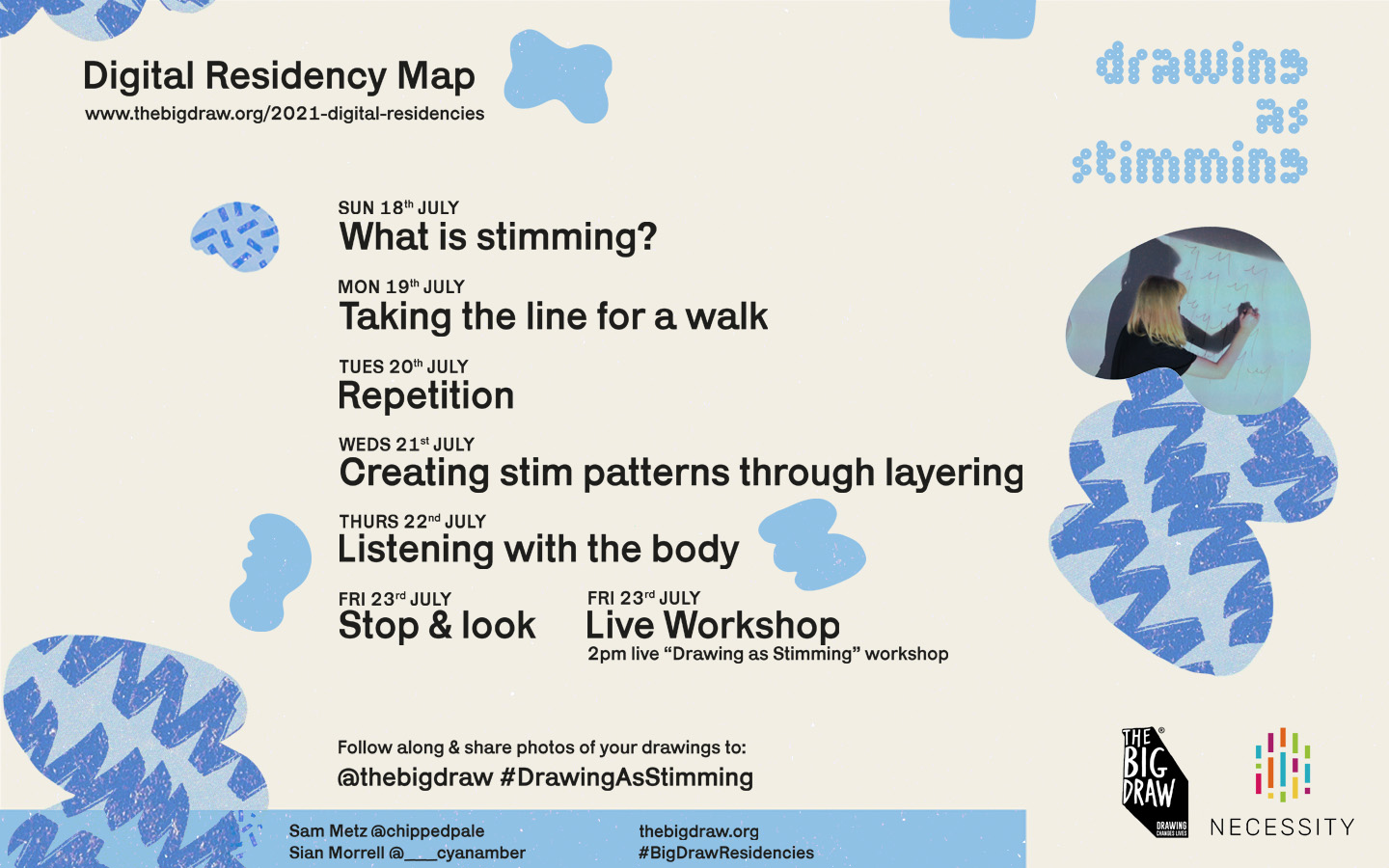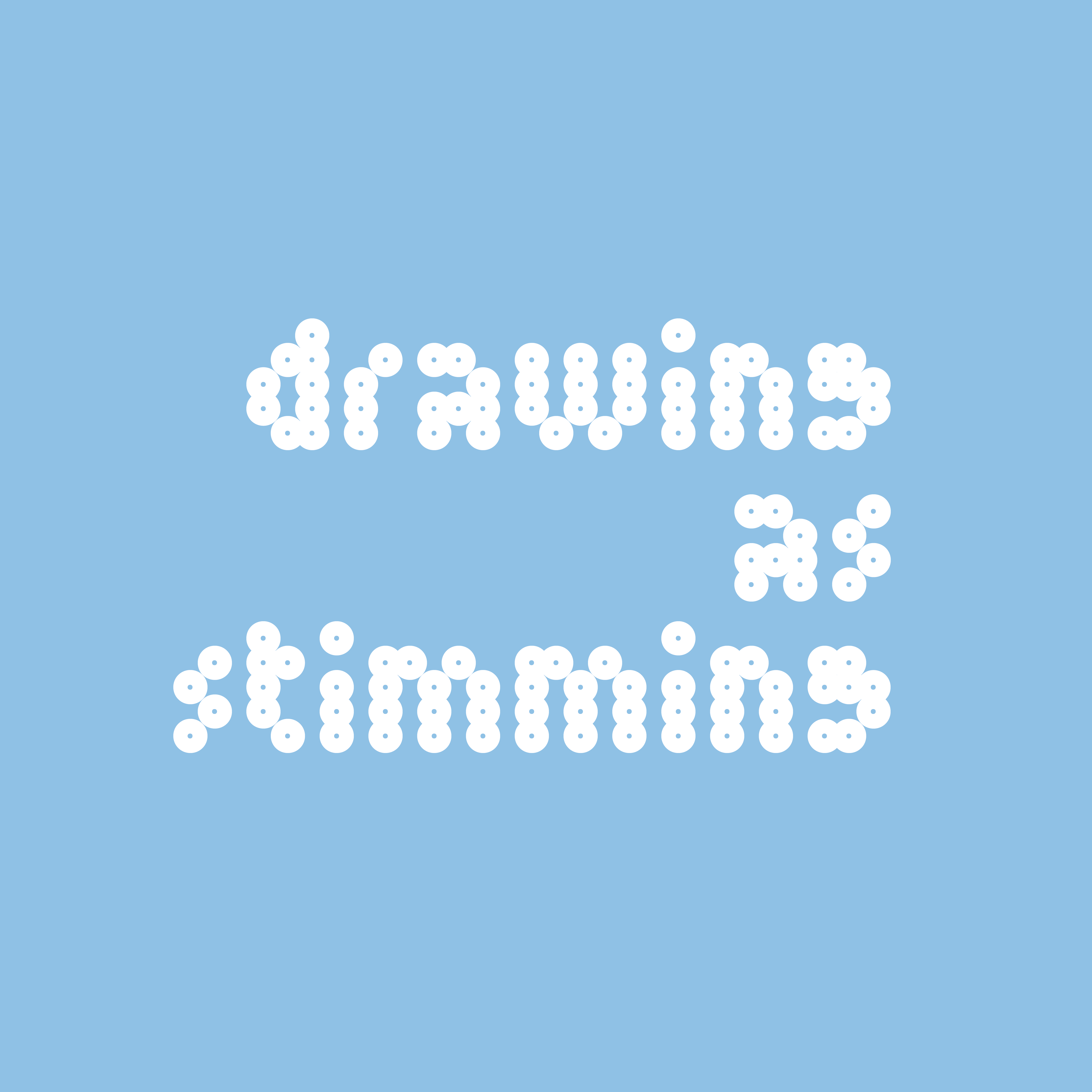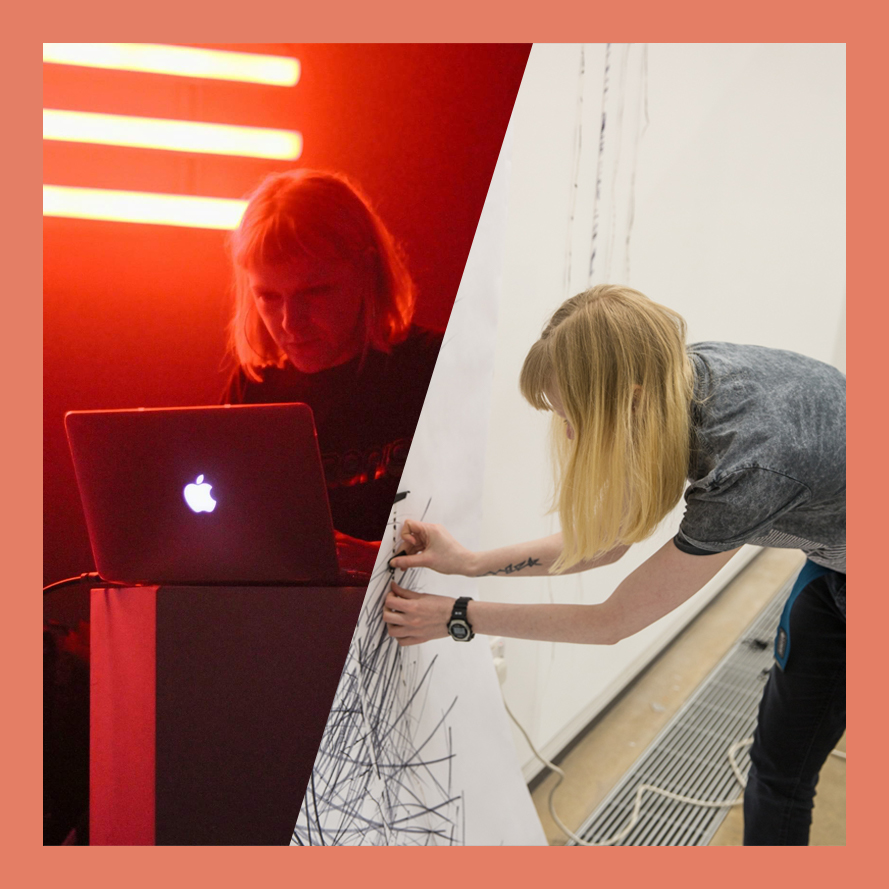Drawing as Stimming for The Big Draw looks to create a time where stimming can happen, through drawing digitally and in response to stimuli internal to and external to the body. It seeks to explore how drawing and mark-making can support non-verbal communication and exploration, whilst also providing space to stim.
Book your FREE ticket to Sam and Sian's online workshop on Friday 23 July, 2pm (UK time) HERE.


What is stimming?
Stimming is behaviour often seen in autistic or neurodivergent children and adults that can include repetitive actions such as rocking, hand flapping or making noises. Often stimming is viewed negatively because it is seen when an autistic child or adult is overwhelmed by sensory information. But, importantly, it can also be positive and part of a sensory-seeking journey where the child or adult responds to interesting sensory stimuli. Masking or hiding stimming, which is often learned early in childhood, can be painful for children. However, because stimming is so often misunderstood, linked with bad behaviour and seen as disruptive, lots of children who have the ability to mask will be pressured to do so.
The residency will include:
- Short video communicating the process of drawing as stimming Gifs that follow the learning methods of social stories and comic strip conversations embody the process of drawing as stimming
- Printed postcards to be posted with links to digital tools (in easy read format) that enable exploratory drawing and experimentation that considers visual empathy and listening with the body.
- Education video with visual and sensory description of the process. The artist is able to deliver this live via video conferencing but is also keen that a pre-recorded version is available to respond to the needs of participants/carers and support workers who may need other ways to access that aren’t time bound. All digital tools created will have audio captioning where needed and alt text for images.
The project’s ultimate aim is to legitimise non-verbal communication, to create a time where it is safe to stim or to respond with the body through a particular kind of exploratory drawing and mark-making that opens up the body to wider listening and encourages repetition and mark-making in a playful way. The theme of Make the Change is fitting as we ask neurotypical people to consider neurodivergent ways of thinking and to be open to viewing alternative modes of expression more positively.

Digital Residency Map: Drawing As Stimming
Sunday 18th July - What is Stimming?
Monday 19th July - Taking the Line for a walk
Tuesday 20th July - Repetition
Wednesday 21st July - Creating stim patterns through layering
Thursday 22nd July - Listening with the body
Friday 23rd July - Stop & look
Friday 23rd July - 2pm Live “Drawing as Stimming” workshop Book on Eventbrite
Follow along & share photos of your drawings to @thebigdraw #DrawingAsStimming
Sam Metz @chippedpale
Sian Morrell @___cyanamber
Thebigdraw.org
#BigDrawResidencies
Supported by The Big Draw and Necessity
Drawing As Stimming
Drawing As Stimming is about opening up the body to wider listening. Stims are the repetitive, often soothing movements made by many autistic and neurodivergent people. From 18 July, we will be posting a series of visual prompts that start from these movements, encouraging repetition and mark-making in a playful way. Whether you are someone who stims or someone who has never observed stimming in the past, join us and use these prompts to create your own art.
Drawing as Stimming aims to create a time where it is safe to stim or to respond with the body through drawing.
What is Stimming?
Stimming is behaviour often seen in autistic or neurodivergent children and adults that can include repetitive actions such as rocking, hand flapping or making noises.
Often stimming is viewed negatively because it is seen when an autistic child or adult is overwhelmed by sensory information. But importantly it can also be positive and part of a sensory seeking journey where the child or adult is responding to interesting sensory stimulus.
Masking or hiding stimming, something that children sometimes learn early to do, and can be painful for children.
However, because stimming is so often misunderstood, linked with bad behaviour and seen as disruptive, lots of children who have the ability to mask will be pressured to do so.
Easy-Read Postcards
We have produced Drawing as Stimming postcards to prompt and encourage exploration of movement and mark making. Our bright and bold easy-read postcards have an audio version available that is linked here: https://www.videoask.com/f9escx18q
We’ve also produced a version of postcards with tactile shapes to reflect how you might approach marks you make, turning the paper and moving your body. If you are interested in a physical copy for yourself or groups you work with, do email Sam at sammetz@outlook.com
From 18 July to 23 July, we will be sharing digital interpretations of the postcards which blend animation and live action. We invite you to draw along with the daily prompts. We hope that the approach to drawing will be supportive and offer a space for stimming.
We are sure that the results in your drawing will be beautiful and interesting!
Do feel free to share them with us, or if you would like a postcard pack for your own sessions, email Sam at sammetz@outlook.com

Sam Metz & Sian Morrell
Sam Metz is an interdisciplinary artist inspired by movement. Sam’s work researches, creates and reflects on the concept of what they refer to as ‘choreographic objects. A ‘choreographic object’ is any work Sam creates that has, through the process of making or in the way it looks, a relationship to the body and movement.
As a neurodivergent artist with sensory processing differences, the objects allow Sam to work in non-verbal ways, which is a key part of their practice. As an artist with an unpredictable body (due to both Tourette’s and the disability EDS, a connective tissue disorder) the creation of visual, sculptural objects for choreography and alternative forms of notation have allowed the artist alternative methods of communication with artists.
Sian Morrell is based in Derby where she co-directs 10pm Print Club, a DIY design and screen print studio with Niall McGonagle and Ste Furey. She is part of art and music collective, Shady Cow, a LGBTQIA+ live music showcase, and label Year of Glad, producing artwork, merch and videos for music artists.
Sian’s practice is largely digital based, from 2D typography, motion and 3D illustration. She also enjoys finding ways of blending digital and physical environments in event, exhibition, and workshop spaces; this allows for multidisciplinary explorations utilising projection, augmented reality, and creative coding, combining with traditional processes in mural painting, screen printing and textile work.


About The Big Draw Digital Residencies 2021
In April 2021, The Big Draw announced its first ever digital residencies. We invited all UK-based artists to submit a proposal that responded to the 2021 Big Draw Festival theme, Make the Change.
Proposals could use both physical and digital tools and mediums, could have a point of real-world engagement, and could take place across a whole month or a more intensive week; we deliberately chose to leave the brief as flexible and open to interpretation as possible.
Sam and Sian's proposal, Drawing as Stimming, was one of the four selected for our digital residencies!
Find out more about our digital residencies, and meet the other selected artists.
About The Big Draw
Founded in 2000 by the Guild of St George, The Big Draw is a pioneering visual literacy charity dedicated to raising the profile of drawing as a tool for wellbeing, thought, creativity, social and cultural engagement. The charity leads a diverse programme of advocacy, empowerment and engagement, and is the founder and driving force behind The Big Draw Festival – the world’s biggest celebration of drawing.
The Big Draw manages collaborative research projects, campaigns and educational conferences on visual literacy, digital technology and STEAM. The charity supports professional and emerging artists through its national contemporary art prize, The John Ruskin Prize and exhibition, and through events, awards, and competitions, creating platforms for each and everyone who wants to draw.
Find out more about The Big Draw.